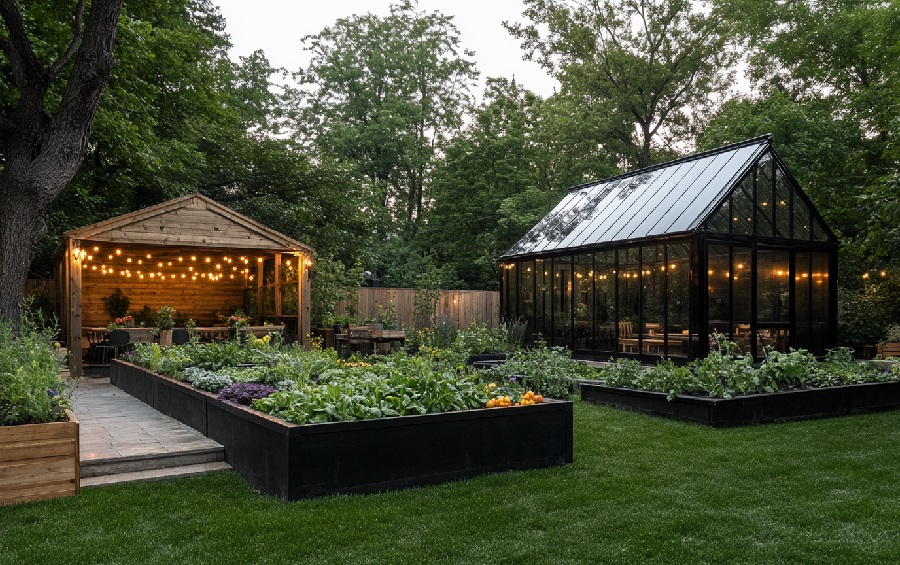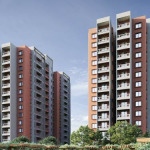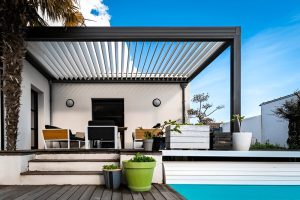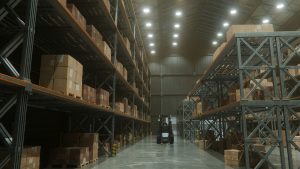
Imagine stepping into your backyard and finding a space that’s not just a storage spot for tools and lawnmowers, but a versatile haven that adapts to your lifestyle. A garden shed can be so much more than a basic outbuilding—it’s an opportunity to create a multifunctional area that enhances your outdoor living experience. Whether you’re looking to organize your gardening gear, set up a cozy workspace, or even host small gatherings, these structures offer endless possibilities for transforming underutilized yard space into something practical and enjoyable.
In this article, we’ll explore the many ways a multi-functional garden shed can elevate your backyard. From design considerations and material choices to creative uses and maintenance tips, we’ll cover everything you need to know to make an informed decision. By the end, you’ll have a clear idea of how to integrate one seamlessly into your outdoor setup, turning your backyard into a personalized retreat.
Why Choose a Multi-Functional Garden Shed?
Backyards are often overlooked as mere extensions of the home, but with the right additions, they can become dynamic spaces for relaxation, productivity, and creativity. A multi-functional garden shed stands out because it combines utility with aesthetics, allowing you to maximize every square foot of your property. Unlike traditional sheds that serve only as storage, these modern versions are designed with flexibility in mind, accommodating various needs without compromising on style.
One of the primary appeals is the ability to customize. You might start with a simple structure for storing seasonal items, but over time, it could evolve into a home office, art studio, or even a guest room. This adaptability is especially valuable in smaller yards where space is at a premium. Plus, in an era where more people are working from home or pursuing hobbies, having a dedicated outdoor space can provide a much-needed separation from indoor life.
Consider the environmental benefits too. Many sheds are built with sustainable materials, helping reduce your carbon footprint. They can also support eco-friendly practices like rainwater collection or solar panel integration, making your backyard more self-sufficient. It’s not just about adding a building; it’s about enhancing the overall ecosystem of your outdoor area.
Planning Your Garden Shed: Key Considerations
Before diving into construction or purchase, thoughtful planning is essential. Start by assessing your backyard’s layout. Measure the available space, noting any slopes, trees, or existing features that could influence placement. Ideally, position the shed in a spot that’s easily accessible yet doesn’t obstruct views or pathways.
Think about size and scale. A shed that’s too large might overwhelm a small yard, while one that’s too tiny won’t serve multiple functions effectively. Aim for dimensions that allow room for storage shelves, a workbench, and perhaps a seating area. Common sizes range from 8×10 feet for basic needs to 12×16 feet for more expansive uses.
Zoning and permits are another crucial step. Local regulations vary, so check with your municipality about setbacks from property lines, height restrictions, and whether a permit is required. Ignoring these can lead to costly fines or the need to dismantle your project.
Budgeting wisely is key. Factor in not just the initial cost but also long-term expenses like insulation, electricity, and furnishings. A well-planned budget ensures you get a shed that meets your needs without breaking the bank.
Essential Features to Include
To make your shed truly multi-functional, incorporate these elements:
-
Insulation and Ventilation: Proper insulation keeps the interior comfortable year-round, while vents prevent moisture buildup and maintain air quality.
-
Windows and Lighting: Natural light from windows brightens the space, and adding LED fixtures or solar lights ensures usability after dark.
-
Electrical Outlets: Wiring for power allows you to run tools, computers, or even a mini-fridge, expanding the shed’s potential uses.
-
Storage Solutions: Built-in shelves, pegboards, and cabinets keep things organized, freeing up floor space for other activities.
-
Security Measures: Locks, motion-sensor lights, and even a simple alarm system protect your valuables from theft or weather damage.
By prioritizing these features, you’ll create a space that’s not only practical but also inviting.
Materials and Construction Options
The choice of materials significantly impacts durability, maintenance, and appearance. Wood is a popular option for its natural look and customization potential. Cedar or redwood resists rot and insects, making them ideal for humid climates. However, wood requires regular sealing to prevent weathering.
Metal sheds offer strength and low maintenance, often coming in galvanized steel to resist rust. They’re quick to assemble and affordable, but they can get hot in summer unless insulated. For a modern twist, consider composite materials that mimic wood but require less upkeep.
If sustainability is a priority, look into recycled plastics or bamboo. These eco-friendly alternatives are lightweight, durable, and reduce environmental impact. Foundation choices also matter—concrete slabs provide stability, while gravel bases are easier and cheaper for smaller structures.
DIY enthusiasts might opt for kits that include pre-cut pieces and instructions, saving time and effort. For those less handy, hiring professionals ensures a sturdy build. Whichever route you take, quality materials pay off in longevity.
Creative Uses for Your Garden Shed
The beauty of a multi-functional shed lies in its versatility. Here are some inspiring ideas to spark your imagination:
Home Office or Studio
With remote work on the rise, converting a shed into an office provides a quiet escape from household distractions. Add a desk, ergonomic chair, and high-speed internet for productivity. Artists or writers can use the space for creative pursuits, with ample room for supplies and inspiration from the surrounding nature.
Gardening Hub
Turn your shed into the ultimate gardener’s paradise. Install potting benches, seed storage, and tool racks. A attached greenhouse extension can nurture seedlings, while rainwater barrels outside collect water for irrigation.
Entertainment Space
For social butterflies, outfit the shed as a man cave or she-shed. Include comfy seating, a bar area, and entertainment systems. It’s perfect for game nights, reading nooks, or even yoga sessions.
Guest Accommodations
In compact homes, a shed can serve as a guest room. With a fold-out bed, basic plumbing, and heating, it offers privacy for visitors without invading your main living space.
Workshop for Hobbies
Woodworkers, mechanics, or crafters will appreciate a dedicated workshop. Equip it with workbenches, power tools, and dust collection systems to keep things tidy and safe.
These uses demonstrate how a single structure can adapt to changing needs, making it a worthwhile investment.
Design Tips for Aesthetic Appeal
A garden shed shouldn’t stick out like a sore thumb; it should blend harmoniously with your backyard. Match the exterior to your home’s style—perhaps with similar siding, paint colors, or roofing. Adding decorative elements like window boxes, trellises, or pathways enhances curb appeal.
Landscaping around the shed integrates it into the yard. Plant flowers, shrubs, or vines to soften edges and create a welcoming vibe. Pathways of stone or gravel lead visitors naturally to the entrance.
Interior design matters too. Use light colors to make the space feel larger, and incorporate multifunctional furniture like storage ottomans or wall-mounted desks. Personal touches, such as artwork or rugs, turn it from utilitarian to cozy.
Maintenance and Upkeep
To keep your shed in top shape, regular maintenance is non-negotiable. Inspect the roof annually for leaks, and clean gutters to prevent water damage. Treat wooden surfaces with sealants every few years to ward off rot.
Pest control is vital—seal gaps and use natural repellents to keep critters out. Organize seasonally: clear out clutter in spring and winterize in fall by insulating pipes and storing sensitive items indoors.
Energy efficiency can be boosted with solar panels or energy-efficient windows, reducing long-term costs. A little effort goes a long way in preserving your investment.
Common Maintenance Tasks
-
Cleaning: Wipe down surfaces and sweep floors monthly to prevent dust buildup.
-
Repairs: Fix loose hardware or damaged panels promptly to avoid bigger issues.
-
Weatherproofing: Apply caulk around windows and doors to seal against drafts.
-
Organization: Use labeled bins and hooks to maintain order inside.
-
Inspections: Check for signs of wear, like cracks or fading paint, twice a year.
Sticking to a routine ensures your shed remains functional and attractive.
Environmental and Sustainability Aspects
Incorporating green practices into your shed project benefits both the planet and your wallet. Opt for materials with low VOCs to minimize air pollution. Solar-powered lighting and ventilation reduce reliance on electricity.
Water conservation features, like rain barrels connected to gutters, provide free irrigation. Planting native species around the shed supports local wildlife and requires less maintenance.
Composting stations nearby turn yard waste into nutrient-rich soil, closing the loop on sustainability. These elements make your backyard a model of eco-conscious living.
Potential Challenges and Solutions
No project is without hurdles. Space constraints in urban yards can be addressed with vertical storage or compact designs. Budget overruns? Prioritize essentials and add luxuries later.
Weather extremes pose risks—reinforce structures in windy areas or add insulation for cold climates. Neighbor disputes over aesthetics? Involve them early or screen the shed with landscaping.
By anticipating issues, you can navigate them smoothly.
Cost Analysis and ROI
Initial costs vary: basic models start around $1,000, while custom builds can reach $10,000 or more. Factor in add-ons like electricity ($500–$2,000) or insulation ($300–$1,000).
The return on investment comes from increased property value—sheds can add 5–10% to your home’s worth. Plus, the daily utility saves money on gym memberships, office rentals, or storage units.
Long-term savings from energy efficiency and durability make it a smart financial move.
Inspiring Real-Life Examples
Take Sarah from Seattle, who transformed her shed into a pottery studio. With natural light and organized shelves, she now sells her creations online. Or Mike in Miami, whose shed doubles as a home gym, complete with weights and a sound system. Then there’s Emily in Austin, who turned her storage shed into a hybrid office and yoga retreat, complete with skylights and foldable furniture for seamless transitions between work and wellness.
These stories show how everyday people are reimagining their backyards, proving that creativity knows no bounds.
Final Thoughts on Backyard Transformation
A multi-functional garden shed is more than an addition—it’s a catalyst for change in how you use your outdoor space. From planning to enjoyment, the process rewards those who invest time and thought. Whether for work, play, or relaxation, it opens up new possibilities right in your backyard.
As you consider expanding your options, don’t overlook complementary structures like a louvered pergola to shade adjacent areas and enhance the overall ambiance.








